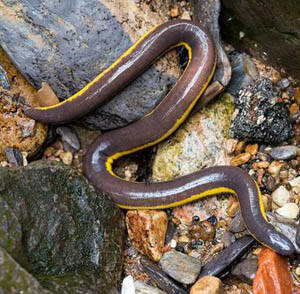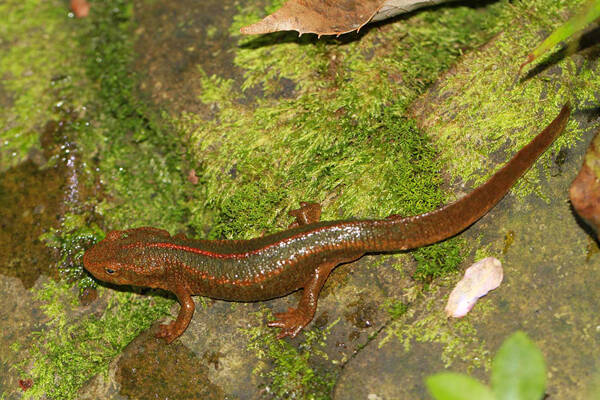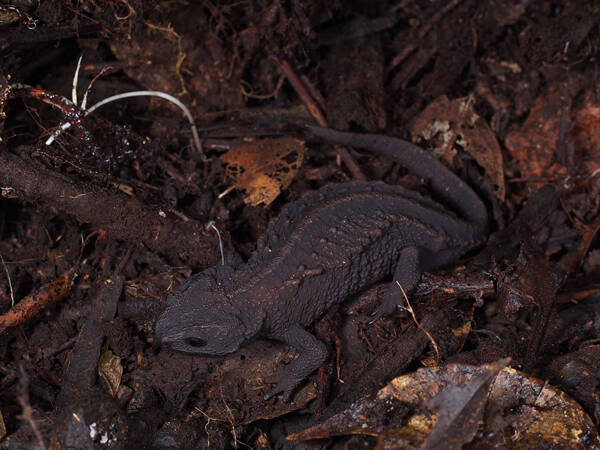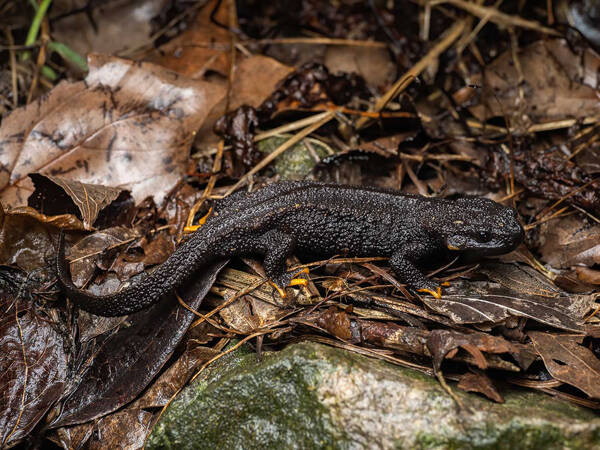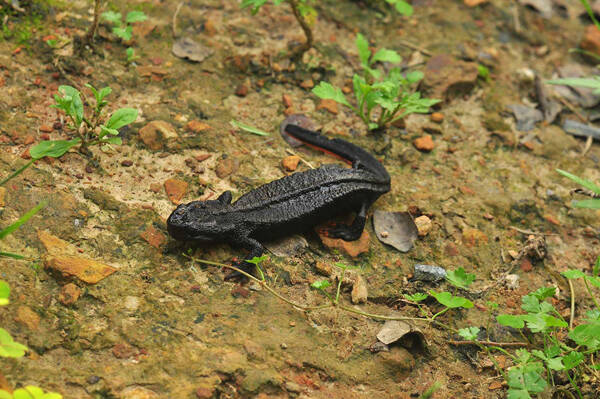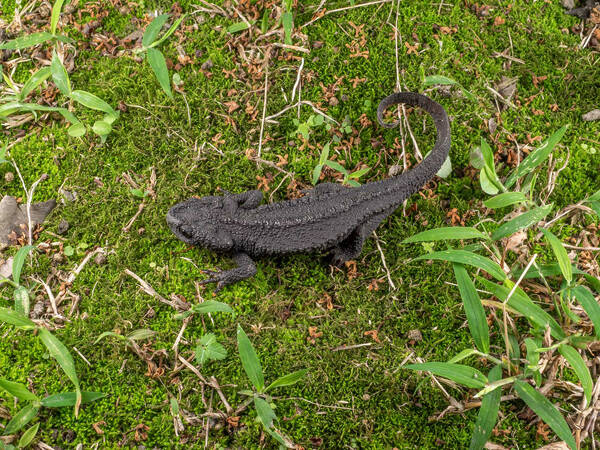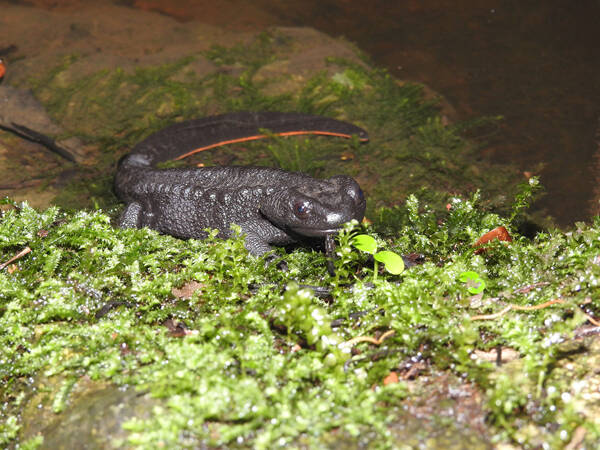Batrachuperus tibetanus
IUCN
LCBasic Information
Scientific classification
- name:Batrachuperus tibetanus
- Scientific Name:Batrachuperus tibetanus,Giant salamander, Qianghuo fish, mountain pepper, fir fish
- Outline:Urodela
- Family:Caudata Hynomatidae S.Salamander
Vital signs
- length:181-211mm
- Weight:
- lifetime:
Feature
The back of the body has fine linen spots or no spots.
Distribution and Habitat
Endemic to China, distributed in Qinghai (Xunhua, Banma, Hualong), Gansu (Wenxian, Tianshui suburbs, Wushan, etc.), Shaanxi (Liuba, Ningshan, Zhouzhi, Longxian, Fengxian), Sichuan (Nanjiang, Ganzi, Aba, etc.), Chongqing (Chengkou), Tibet (Jiangda).
Lives in mountainous areas or plateau streams at an altitude of 1500-4250m, mostly living under rocks in the stream.
Appearance
The head is relatively flat, with its length slightly larger than its width, a wide and round snout, and well-developed lip folds. Adults have no gill openings on the sides of their necks, and no remnants of gills. The back of the body and tail is dark brown, dark gray, or olive gray, with small dark brown spots or no spots. The ventral side is slightly lighter in color than the back.
Details
The Tibetan stream salamander is a tailed amphibian adapted to plateaus or cold mountain streams. It is distributed at an altitude of 1500 to 4300 meters, but mostly in mountain streams above 3000 meters. In areas with northern latitudes, the altitude is generally lower, such as the Nanjiang area of Sichuan Province at an altitude of 1600 to 1850 meters, and Liuba in Shaanxi Province is also distributed at 1500 to 1700 meters. The salamander generally lives in small mountain streams or springs and stone beaches and downstream streams. The water surface width is about 1 to 2 meters, and some can reach more than 4 meters. The water depth is 15 to 40 centimeters. There are many large and small stones in the stream. The water quality is clear and the pH is 5 to 8.
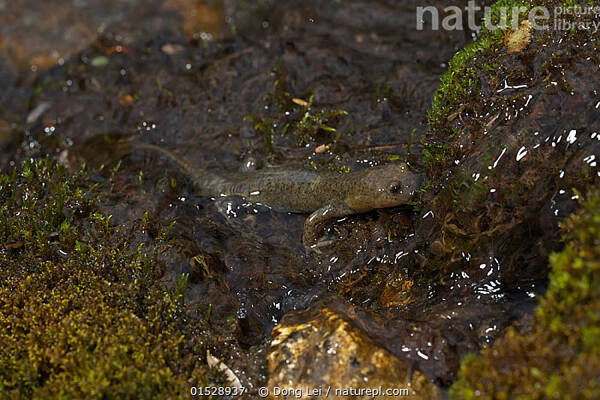
During the day, Tibetan mountain stream salamanders often hide under rocks by the stream, sometimes under rotten wood or under the roots of plants on the shore; at night, they often move in the stream, sometimes crawling on the shore, moving slowly and easy to catch, but because their bodies are smooth and have a lot of mucus, they are often difficult to catch and slip away when caught. Juveniles and metamorphosed young salamanders are mostly found in the upper reaches of streams, especially at the source. It mainly feeds on hook shrimps (accounting for 70% to 90% of its stomach weight), and also preys on insects and their larvae such as the family of stoneflies, marsh beetles and stoneflies in streams.
The breeding behavior of the Tibetan mountain stream salamander includes: courtship display behavior, spawning behavior in pairs and egg protection behavior. The breeding season of this salamander is from May to early August, and most of them lay eggs in May and June.
1. Courtship display behavior: The male shows off by swinging his tail for 20 to 30 minutes, and then the female takes the initiative to approach the male who is showing off or gently touches the male's tail with a kiss, and finally completes the hugging process. In early June, another courtship process was found: the male takes the initiative to approach the female, and sometimes the male gently touches the female's head with a kiss, showing intimate behavior, and finally the female accepts the male's "courtship" behavior and hugs him.
2. Oviposition: Tibetan mountain stream salamanders mate while spawning. Before mate, the female first attaches part of the egg sac to stones and other attachments in the stream. At the same time, the male, who is showing off next to her, takes the opportunity to mate with the female and pulls the egg sac out with his hind legs. While pulling the egg sac, the male ejects white flocculent semen from the cloaca onto the egg sac, repeating this action until the egg sac is completely produced. During the process of the male pulling out the egg sac and ejaculating, the female opens her mouth from time to time and occasionally makes a "cooing" sound. At the same time, the male's body bends extremely. This process lasts for 2 to 3 minutes, and then gradually returns to normal, and the mate ends. After that, the male lingers beside the female for about 5 to 10 minutes, and often mates again. After the egg sac is discharged, the female's body bends into a crescent shape, and gradually returns to its normal shape after about 2 to 3 minutes. It slowly starts to swim in the spawning ground, while the male gradually leaves the spawning ground after 30 to 45 minutes.
3. Egg protection behavior: After the pairing and egg-laying behavior are over, the male swims in the spawning ground and generally does not leave immediately. It often protects the eggs for 30 to 45 minutes. When other males approach, they shake their heads or raise their heads to look at them, and open their mouths to bite, demonstrating to other males close to the egg sac, and turn around the egg sac, while using their heads to attack the other party, until the other party is far away from the spawning ground, the male gradually leaves the egg sac.
In Chinese folk, this species is used as medicine in the same way as mountain stream salamander, commonly known as "qianghuo fish" or "shanmu fish". According to the "Sichuan Chinese Medicine Records" (1962), qianghuo fish is mild in nature, spicy in taste, powerful, and non-toxic; it enters the liver and stomach meridians, and has the effects of promoting qi and relieving pain, nourishing and strengthening the body.
According to the Tibetan Medicine Records (1991), the Tibetan medicine "Longzang (Tibetan transliteration) is the dried whole body of this species with the internal organs removed, pounded and set aside; it can also be used fresh or boiled in soup. It has the effects of bone setting, promoting qi and relieving pain, and nourishing and strengthening the body; it can treat bruises, fractures, liver and stomach pain, blood deficiency and spleen weakness, and kidney cold and impotence, especially stomach diseases. In Qinghai Province, the dried salamander is used as medicine, called "bone setting pill", which can treat bruises and bone setting, and is effective for low back pain, bone pain and joint pain. In addition, some people catch it for food.
Due to people's indiscriminate hunting, its resources have been severely damaged, and its traces are hard to find in some areas. Therefore, this salamander should be protected.
Listed in the second level of the "List of National Key Protected Wildlife in China".


